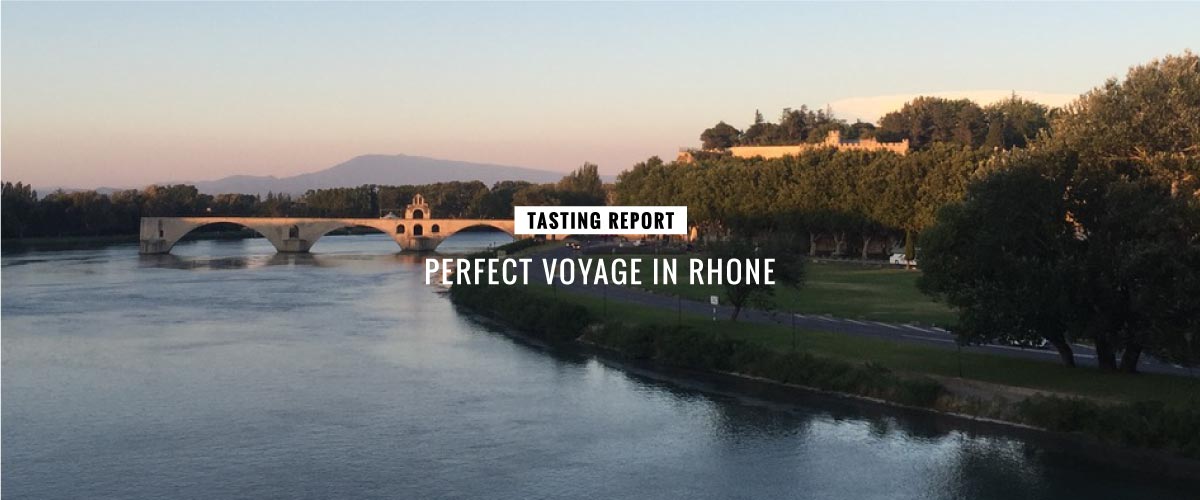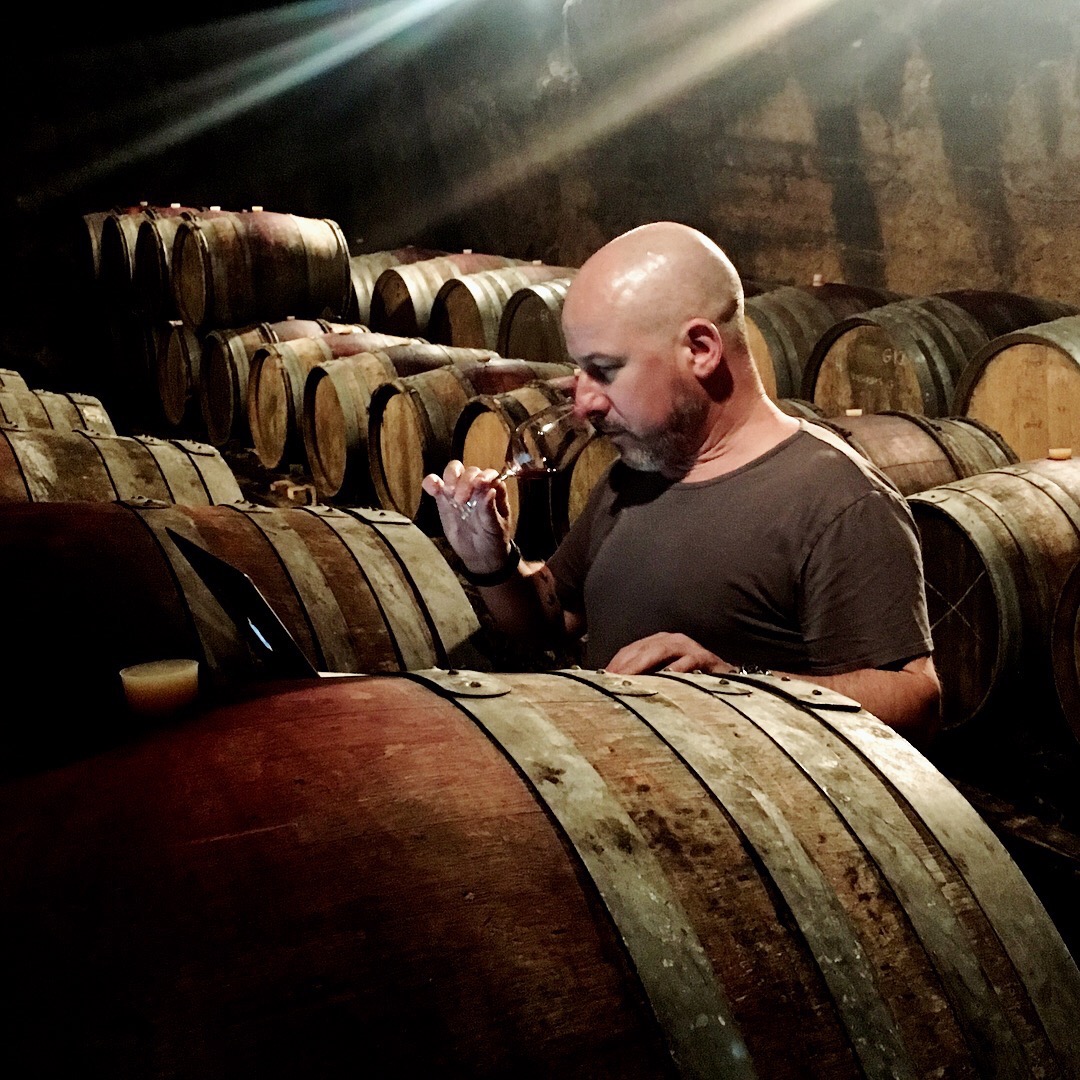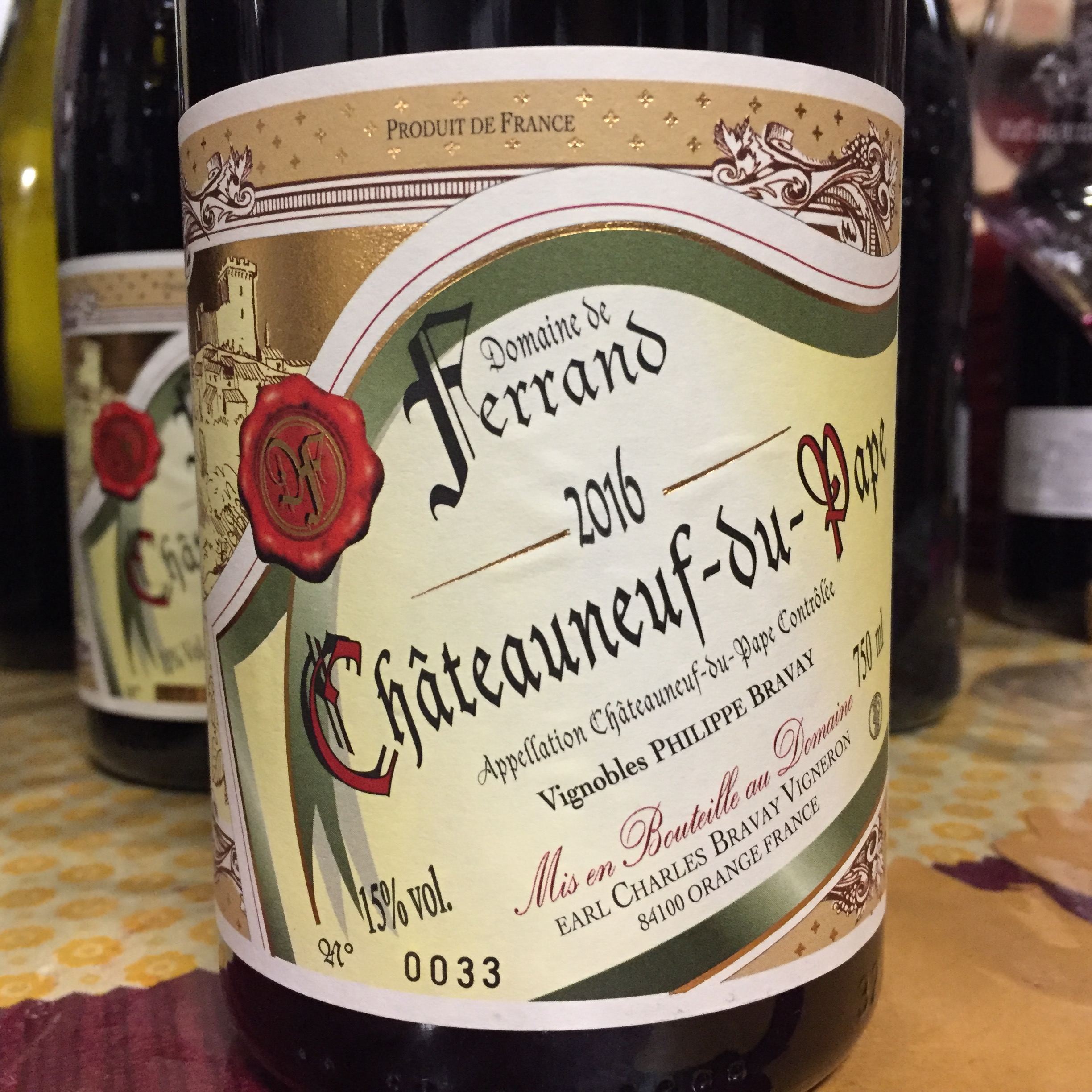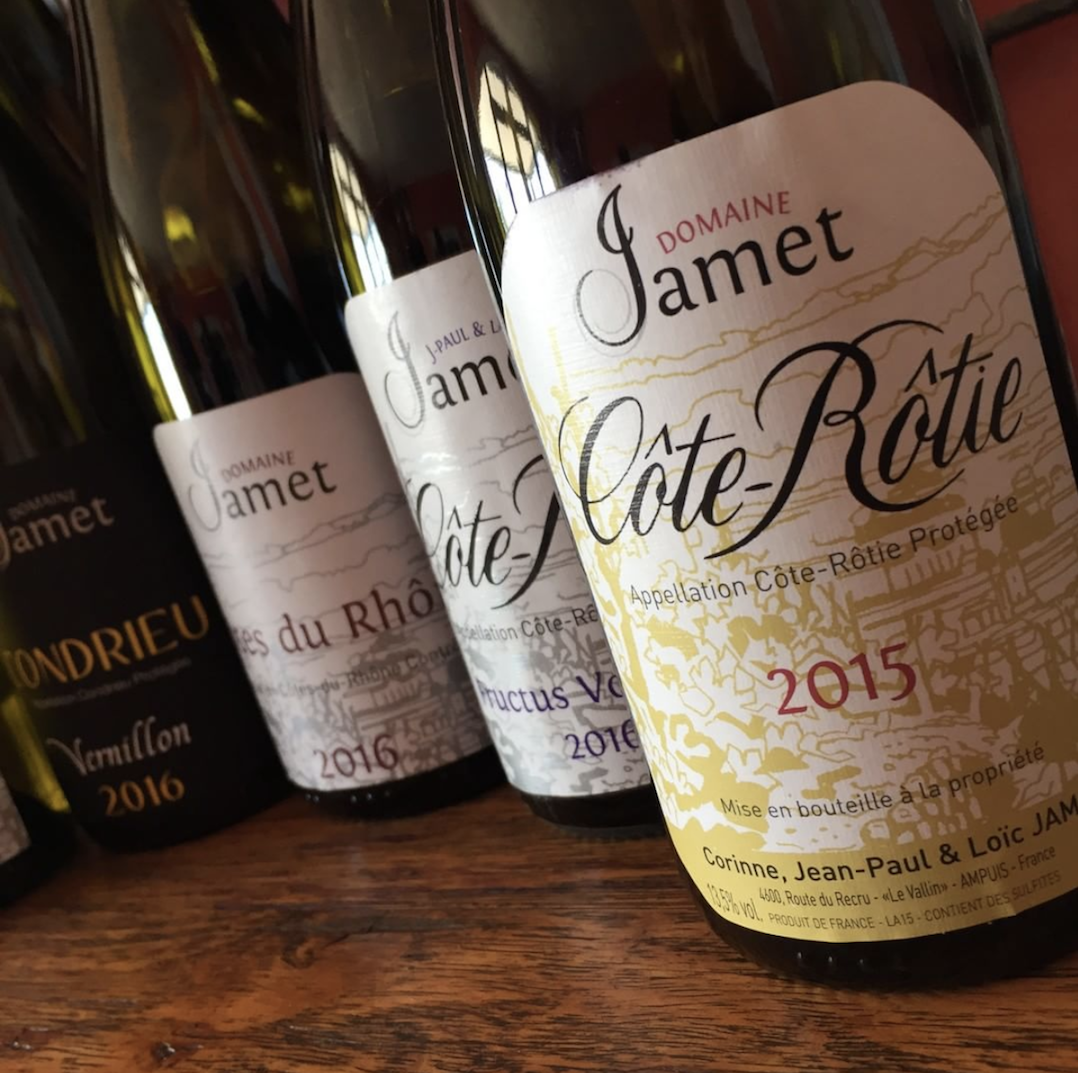A Perfect Voyage in the Rhone
 As I signed off last year’s Southern Rhone tasting report, I declared that “next year’s visit cannot come soon enough,” and as I returned to my modest hotel to the north of Avignon in France in July this year, I was champing at the bit to taste the next vintage. The beautifully plush and carefully engineered 2015s had been superb, and the promise of fresh and refined 2016s had not been forgotten.
As I signed off last year’s Southern Rhone tasting report, I declared that “next year’s visit cannot come soon enough,” and as I returned to my modest hotel to the north of Avignon in France in July this year, I was champing at the bit to taste the next vintage. The beautifully plush and carefully engineered 2015s had been superb, and the promise of fresh and refined 2016s had not been forgotten.
My eagerness for rating the wines this year was rewarded with all the wines tasted in the Rhone this summer. I tasted almost 500 wines while traveling through the region and I found some fabulous wines including one perfect, 100-point Chateauneuf — Château de Beaucastel Chateauneuf-du-Pape Hommage à Jacques Perrin 2016 — and a 99-point counterpart in the estate’s normal bottling. Domaine du Vieux Telegraphe and Domaine de Ferrand were close by with 98-point bottlings from the same vintage. And there are hundreds of other wines rated 90 points or more.

Contributing Editor Nick Stock tasting a barrel sample of Domaine Gramenon 2017.
The wines in this year’s tasting in the southern Rhone certainly did not disappoint and the apex moment of power and finesse was everything it had promised to be. The Chateauneufs 2016 are quite simply the best wines this region has seen in a very long time. The overcooked fruit, the excessive extraction and the obsession with excess seem to be over for most producers. The glory of grenache as an expressive, complex, elegant, enlivening, and powerful platform is back and long may it reign!
As Marc Perrin of Beaucastel explained to me last year while barely containing his excitement, “Everything is perfect in 2015 and I think 2016 is perhaps even better!”
Daniel Brunier of Vieux Telegraphe also couched 2016 in similarly glowing terms: “If I had to summarize, I would say 2015 is a very good vintage and 2016 is magic. Honestly, the 2016 vintage is really magic; it is very rare.”
My first visit was a baptism of 2017 vintage wines hosted by the legendary Michele Aubery-Laurent of Domaine Gramenon. It is a small domaine that farms organically, making extremely high-quality wines with minimal intervention or sulfur. It is closely connected to the natural forces of nature.
The extreme dryness of 2017 had clearly unsettled Aubery-Laurent. “It was very dry, so ripeness was difficult to achieve,” she lamented. “We waited and waited and, even if we have higher alcohols, the wines have good fruit development and flavors.” Aubery-Laurent always emanates a mix of strength and compassion, but she was clearly concerned with the extreme conditions of the 2017 season; even though she has underlying trust and assuredness in the resilience of her old vines.
As I tasted from parcel to parcel, the lack of moisture in the vineyards could be felt as bolder tannins framed a hearty, rich and plush core of fruit. The highest scores went to the oldest vines, with the Domaine Gramenon Côtes-du-Rhone La Mémé 2017 from cask awarded 94-95 points, just one level below the 95-96 range awarded to the stunning 2016 vintage.
Pulling into Chateauneuf tastings and the purest barometer of the quality of the harvest was that of Domaine de Ferrand, where I tasted with the wise and humble Philippe Braval. With effortless majestic length, fine detail and immense freshness, this blend of a young-vine parcel (about 40-year-old vines with a northerly exposition) and an old-vine parcel (1920, 1910 and 1904 plantings from Braval’s grandfather and great-grandfather, close-planted in a warmer, south-facing site) sees no oak.
Each and every one of the 98 points I awarded to this wine is due to the quality of the terroir, the season and three generations of the Braval family’s unwavering commitment to making authentic and delicious Chateauneuf. It is a triumph to all that is good in traditional winegrowing.
I previewed some impressive 2016 Beaucastel components during my visit last year and the resulting Chateauneuf-du-Pape 2016 is near perfect, awarded 99 points in this year’s report. It is surpassed by one wine, a stablemate, the Chateauneuf-du-Pape Hommage a Jacques Perrin 2016, which I scored a perfect 100 points. The mourvedre (60 percent of the blend) delivers that X-factor-mineral cut that elevates it above the stunning regular bottling.

This is a blend of a young-vine parcel (about 40-year-old vines with a northerly exposition) and an old-vine parcel (98- to 114-year-old vines). This is as pure as it gets in Châteauneuf!
A preview tasting of Beaucastel’s 2017 Chateauneuf blend showed richness with darker plummy fruits, reflecting a riper and drier vintage expression shaped by very low yields. Incredible concentration of deeply sweet fruit and some firm tannins wrap nicely at the finish. It’s looking very promising.
The quality of the entire range of Brunier Family wines was once again exceptional, led by the flagship Vieux Télégraphe Chateauneuf-du-Pape La Crau 2016, which I rated 98 points. I also was impressed by the Vieux Télégraphe Chateauneuf-du-Pape Piedlong 2016, a standout vintage for this wine. It has exceptional precision and power, driven by sublime grenache character.
The white Chateauneuf highlights are refreshingly plentiful with Charbonnière and La Nerthe both delivering exceptional 2017s; also look to the Beaucastel Chateauneuf Roussanne Vieilles Vignes 2017 and the Clos La Roquète 2017. The top white score goes to the Vieux Télégraphe Chateauneuf-du-Pape 2017 with 96 points, as it shows exceptional concentration, weight and marvelous freshness in a vintage that could easily have been toppled by the dry conditions.
As an overall assessment of the 2017 vintage, my read on the early tastings is actually very positive, despite the difficulty with a dry season. The vines have delivered a deeper expression of tannin and a depth seen in Côtes-du-Rhone-level wines that are very attractive. The imprint of the vintage is deep, but this incredibly low-yielding dry season could merely be a sign of things to come. Unfortunately, the result in the wines in 2017 can’t be compared to the 2016 vintage.
Heading north in glorious weather of the summer, the same sense of anticipation around 2016 vintage remained and the first tasting with Jean Gonon of Domaine Pierre Gonon of St. Joseph also put some context around the 2017 harvest in the north. “It was similar in temperature to 2015,” he explained, “but much drier with lower yields. In St. Joseph, we achieved 38 hectoliters per hectare in 2015, compared with only 28 in 2017.”
The tasting of Gonon’s 2017 Vin de Pays Les Iles Feray confirmed a similar reaction from vines as was seen in the south. The tannins show greater thickness and density. And the wines are plush and very fruity. The overall impression of size is matched by that of balance. So too is the Gonon St. Joseph 2017, which is round, deep and flowing. For the first time in 25 years, this wine has been fermented as 100-percent whole clusters.

Jamet was one of the highlights on Nick’s tasting trip in Cote-Rotie. Authentic wines with such strong character.
Additional fruit weight delivered via lower yields means that the double act of concentration of flavor and a more powerful tannin structure is a feature in 2017 vintage reds in top estates and cellars in the Northern Rhône. Tannin management in terms of extraction and aging in cellars will be critical factors in determining final quality.
In comparison, the quality of the 2016s is high across the board. Indeed, this is the vintage to buy deep and buy wide. Gonon’s wines, for example, are stunning and deliver layered, concentrated, fresh, and balanced appeal.
Among others I visited, Stephane Ogier showed a deep range of his wines primarily across the appellations of St. Joseph and Cote-Rotie and his wines show power with elegance. The elucidation of detail at Ogier is exceptional and makes for a fascinating study of terroir. Seek out any and all 2016 wines here.
The theme continued at one of my next stops, Jean-Michel Gerin. “Power with elegance, that’s the whole point of Cote-Rotie,” explained Alexis Gerin, “2016 is amazing here, we are lucky.” The 2016 wines tasted at Gerin just prior to bottling showed astonishingly great: La Landonne 2016 (97-98 points) and a mind-blowing Les Grandes Places (98-99 points). The latter, from Gerin’s oldest vines (planted between 1927 and 1960) were planted at the top of the slope on schist and delivered a lightning strike of power and spark.
A visit to the legendary estate of Jean-Louis Chave of Hermitage was the same. The tasting began with the whites and it was a lesson in terroir. “2017 was very warm and very ripe, but the whites are still fresh and powerful,” he said. “Power is all important to these wines.” And powerful as they are, the components of Hermitage 2017 deliver extraordinary depth and drive in a layered form. Each component assembles together in a complete and round result, like slices of a magnificently flavorful and textural pie.
Chave’s 2016 St. Joseph and Hermitage are a pair of strikingly powerful, nuanced and age-worthy wines, yet very clearly different. The showy, expressive and almost playful St. Joseph is contrasted against a refined, regal and majestically powerful Hermitage. They both deliver admirable detail with thoroughly ripe tannins. “You need ripe grapes to make good wines,” Chave reminded us, delivering extremely disciplined, faithful renderings of multiple parcels that are assembled with a very watchful eye to completeness and depth. This is a class act.

Nick also visited Vieux Télégraphe to taste and talk with the formidable Daniel Brunier. The 2016 wines are pure and powerful in Gigondas & Châteauneuf. The concentration and rich tannins of the 2017s also impressed!
Elsewhere in the northern Rhone, Chapoutier’s barrel samples for 2016 showed extremely well, while Jamet and Guigal both delivered great Cote-Rotie wines from 2015 and 2014 vintages, respectively. The pick of Guigal La La 2014 is La Turque, although all three are excellent and closely grouped in the rankings. La Turque stands out for the stunning trick of simultaneously delivering commanding power with extreme finesse. They are extremely well done for the difficult 2014 vintage.
And a special mention to the family at Domaine A. Clape. Hosted by Auguste Clape’s grandson Olivier, I tasted an exceptional set of wines from 2016 during my visit on July 11. It was just two days before his grandfather Auguste passed away in Valence, aged 93. The vigneron’s spirit looms large in the cellar and the wines and the aura of authenticity are an enduring for all who work the extreme slopes of Cornas.
A final reflection I had on the 2017 vintage as I departed this year’s tastings through the Rhone was the thought of a fascinating tasting in both the north and south in a year’s time. Vintages always have their influence, but extreme years such as 2017 are better anticipated and better played in the vineyards and cellars of the Rhône. This way, the end result in the bottle will be most interesting. My early feeling is that 2017 will deliver plenty of good wine despite the testing drought, heat and low grape yields.
For now, though, this report is packed with very attractive, high-quality wines from south to north and across all appellations, producers and price points — all thanks to the great 2016 vintage. The Rhone is on song. Enjoy! — Contributing Editor Nick Stock